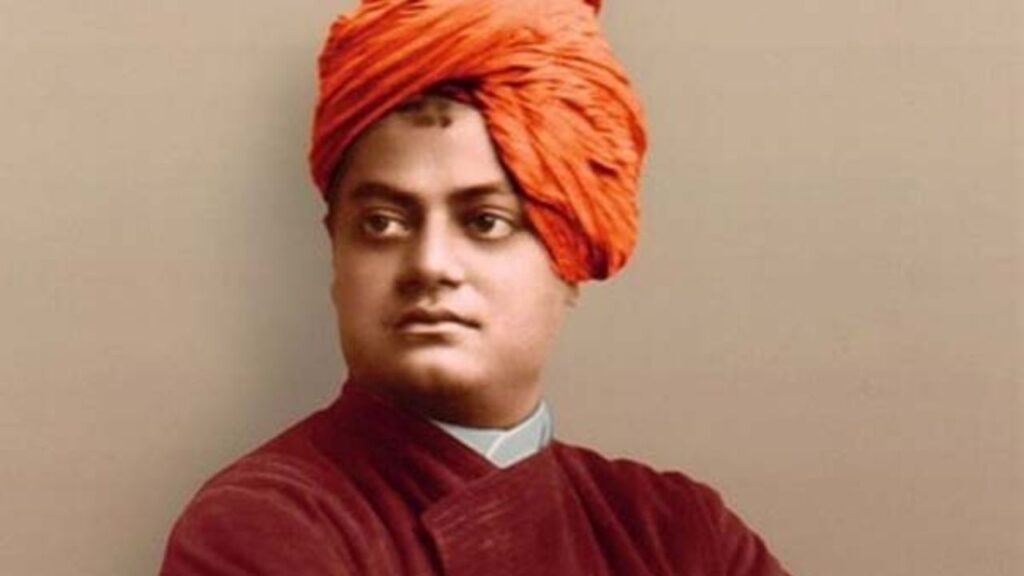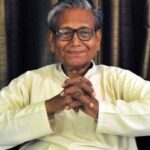Swami Vivekananda Biography: Swami Vivekananda was an Indian Hindu monk, philosopher, writer, and religious teacher. He was born Narendranath Datta on January 12, 1863, and died on July 4, 1902. He was also Ramakrishna’s most important student.
Table of Contents
People say that Swami Vivekananda helped people of different faiths understand each other and made Hinduism a major religion around the world.
People in the West got to know about Vedanta and Yoga thanks in large part to Swami Vivekananda.
Swami Vivekananda Wiki and Biography
Swami Vivekananda became famous after giving a famous speech at the 1893 Parliament of Religions in Chicago. He introduced Hinduism to Americans with the words “Sisters and brothers of America,” which made him very popular.
Someone in the United States wrote that Swami Vivekananda was “an orator by divine right and unquestionably the greatest figure at the Parliament” because of how powerful he was there.
Vivekananda continued to share the basic ideas of Hinduism by giving hundreds of lectures in the US, UK, and Europe after having a lot of success at the Parliament.
The Vedanta Societies of New York and San Francisco, which are now called the Vedanta Society of Northern California, were also started by Swami Vivekananda. They were the foundations for all Vedanta Societies in the West.
Swami Vivekananda Early Life, Childhood
Swami Vivekananda was born in Calcutta, British India, on January 12, 1863. His parents were traditional, and he had nine brothers. His father, Durgacharan Datta, was a progressive thinker who left his family when he was 25 years old to become a monk.
His mother, Bhupaneswari Devi, worked hard as a housewife. He was interested in religion and faith from a very young age and would meditate in front of the gods. He was very interested in monks and ascetics who lived on the road.
Even though he was bad and antsy, his parents had a hard time keeping him in line.
Swami Vivekananda Education
Swami Vivekananda, a Bengali philosopher, began his education at the Metropolitan Institution of Ishwar Chandra Vidyasagar at the age of eight. He achieved first-division marks on the Presidency College admission exam in 1879, after his family relocated to Raipur.
He studied Western logic, philosophy, and European history at the General Assembly’s Institution, now known as the Scottish Church College.
In 1884, he earned a Bachelor of Arts degree. He studied authors like David Hume, Immanuel Kant, Johann Gottlieb Fichte, Baruch Spinoza, Georg W. F. Hegel, Arthur Schopenhauer, Auguste Comte, John Stuart Mill, and Charles Darwin. Vivekananda translated Herbert Spencer’s book Education into Bengali.
Swami Vivekananda Career
After becoming a Hindu again from Christianity in 1880, Narendra joined Keshab Chandra Sen’s Nava Vidhan. He joined a Freemasons’ house and the Sadharan Brahmo Samaj, which is a branch of the Brahmo Samaj led by Sen and Debendranath Tagore.
Narendra learned about Western esotericism, which was shaped by ideas from the Brahmo caste, unitarianism, and transcendentalism.
Narendra’s search for God began when he asked well-known people in Calcutta if they had ever been “face to face with God.” Debendranath Tagore, the head of the Brahmo Samaj, told him, “Yes, I see Him the same way I see you, but in a much stronger way.”
Narendra met Ramakrishna for the first time in 1881. After his father died in 1884, Ramakrishna became his spiritual guide.
It’s likely that they met for the first time in November 1881, when Ram Chandra Datta went with Narendra to Surendra Nath Mitra’s house to give a speech. Narendra was called to Dakshineshwar by Ramakrishna after he asked him to sing.
The meeting between Narendra and Ramakrishna changed his life. It took him away from Brahmoism and into touch with western esotericism.
In late 1881 or early 1882, Narendra met Ramakrishna in Dakshineswar. This meeting changed his life in a big way. At first, he didn’t want Ramakrishna to be his teacher and fought against what he taught.
Narendra, on the other hand, found comfort in Ramakrishna and went to see him often. Following the sudden death of his father in 1884, Narendra became one of the poorest college students.
Narendra continued to learn about religion, and in the end he accepted Ramakrishna as his Guru. After Ramakrishna died in 1886, people who loved and respected him quit helping his followers.
Narendra chose to turn a run-down house in Baranagar into a new monastery for the followers who were still alive. The math became the first building of the Ramakrishna Math, which is the main building of the Ramakrishna Math school.
The other people who worked with Narendra spent a lot of time every day meditating and doing religious penance. In 1887, Narendra and Vaishnav Charan Basak put together a collection of Bengali songs called Sangeet Kalpataru.
Narendra left the monastery as a Parivrâjaka in 1888. For five years, he lived mostly on bhiksha (alms) and traveled all over India.
He felt sorry for the people’s pain and poverty and made a promise to improve the country.
Narendra left Bombay for Chicago in 1893 under the name “Vivekananda,” which means “the bliss of discerning wisdom.”
After becoming a Hindu, Narendra joined Keshab Chandra Sen’s Nava Vidhan in 1880. He also joined a Freemasonry house and the Sadharan Brahmo Samaj.
Inspired by Brahmo ideas, unitarianism, and transcendentalism, he learned about Western esotericism. Narendra’s search for God began when he asked people in Calcutta if they had ever been “face to face with God.”
In 1881, Narendra met Ramakrishna. After his father died, Ramakrishna became his spiritual guide. Narendra was one of the poorest students in his college after his father died.
He turned an old, run-down house into a monastery where he meditated and followed sacred rules of austerity. He left the monastery as a Parivrâjaka in 1888 and lived mostly on bhiksha while moving a lot in India.
Swami Vivekananda Death
Vivekananda taught Shukla-Yajur-Veda, Sanskrit grammar, and yoga philosophy while meditating at the monastery at Belur Math on July 4, 1902. In Ramakrishna Math, he talked about a Vedic college.
Vivekananda passed away while pondering, and his followers thought he reached enlightenment. Brain damage from being cut during mahasamādhi is thought to have been one of the causes of his death.
Vivekananda lived up to his prediction that he would not live forty years, and he was burned at the stake in Belur on a sandalwood funeral fire.
Also Read: Manoj Das Biography: Birthday, Wiki, Early Life, Education, Career, Awards, Personal Life



